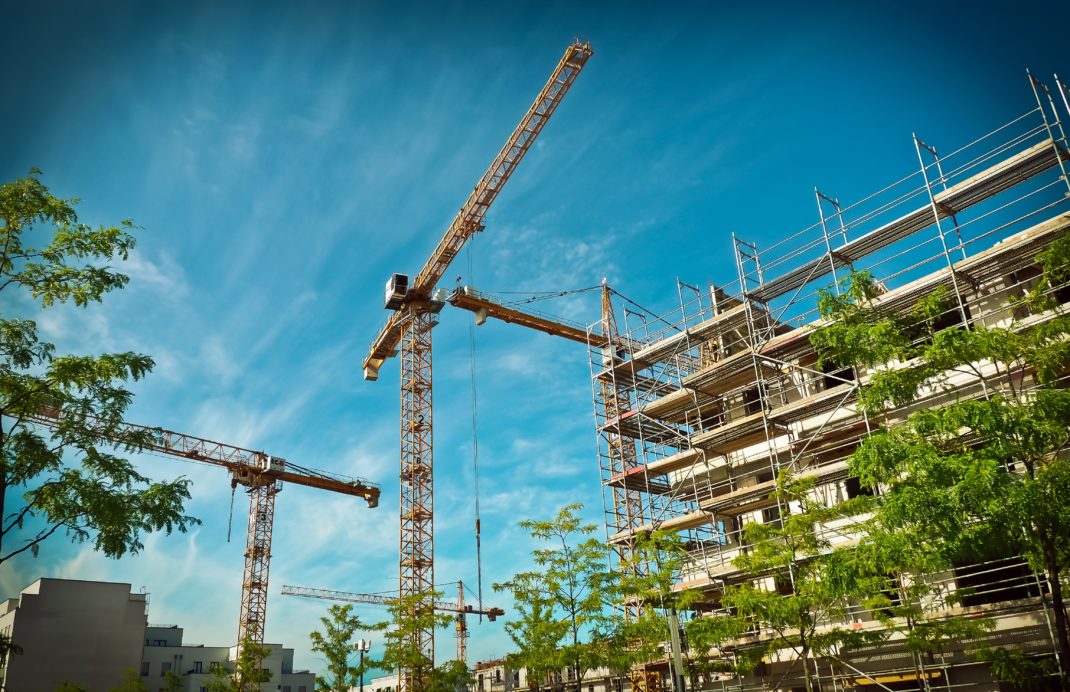
6 Benefits of Sustainable Commercial Construction Products
9 minutes read
Brendan Garvin
Feb 26, 2024 2:15:00 PM


Have you been wondering about a more sustainable way to complete your renovation and building projects? Eco-friendly construction is the answer.With an emphasis on environmentally sustainable construction products and practices, your business can do good while benefiting in its own way:
What’s Sustainable Commercial construction?
Eco-friendly construction is a building structure that is supportive, rather than destructive, to the environment as much as possible. Sustainable construction practices use "green" methods that are energy-efficient and use comparatively few resources
Of course, sustainability also pertains to the construction products themselves. Ideally, they're free of harmful chemicals and consist of local or renewable materials.
Not only does sustainable building benefit the environment by conserving natural resources, it also can benefit your bottom line.
How Do Sustainable Building Products & Materials Help the Subcontractor?
Using eco-friendly materials and building products in construction can benefit commercial subcontractors by aligning them with sustainability trends and regulations:
- Earn LEED credits
- Reduce resource waste
- Pollute less
- Keep occupants healthier
- Improve durability
- Lower operating costs
1. Earn LEED Credits
LEED (Leadership in Energy and Environmental Design) is the world's most widespread green-building rating system. Developed by the U.S. Green Building Council, LEED certification shows that a building meets certain sustainability criteria across various aspects of construction, operation, and upkeep.
Subcontractors can contribute to a project’s ability to earn LEED credits, improving the building's environmental performance and sustainability profile. This not only helps the project meet certification requirements, but also positions its subcontractors as leaders in eco-friendly construction. That might mean more business opportunities with clients aiming for green building standards. And who wouldn't want a reputation like that?
There are also looming, long-talked-about building and energy code updates it doesn't hurt to get out in front of. While nobody knows exactly when they'll drop or what they'll look like, they will align with the same goals of curbing emissions and fuel consumption.
2. Reduce Resource Waste
Green buildings help reduce carbon, water, and energy waste. These buildings are designed, constructed, and operated to mitigate the negative impact typically associated with building and running large structures.
By using reclaimed or sustainable materials alongside eco-conscious repair and protection products, it’s easier to preserve natural resources while completing a quality project.
3. Pollute Less
With fewer resources being used, sustainable construction also mitigates water and air pollution. Not only are the building methods used better for the environment, but the construction products themselves help reduce pollution.
This is especially apparent when recycled materials and low-chemical products are at play.
4. Keep Occupants Healthier
A report from USGBC found the majority of employees are happier, healthier, and more productive working in a certified green building. This is, in part, because eco-friendly construction promotes a higher standard of living for not only the employees, but also for the entire community.
Additionally, these buildings are typically built and operated to provide clean, high-quality indoor air, improved outdoor views, and more natural light. All of this leads to a better work environment that contributes to happiness and productivity.
5. Improve Durability
This may come as a surprise, but some eco-friendly construction materials can be more durable than their counterparts. Bamboo is a popular sustainable construction material because of its versatility and strength. From being used in flooring to walls, not only is it an attractive option for interior design, but it also grows quickly unlike other wood typically used for buildings.
6. Lower Operating Costs
Eco-friendly construction is a long-term investment. Green buildings are designed and constructed to lower operating costs across the board. For example, many of these structures make the most from natural light to reduce their energy expenses. The same goes for HVAC and plumbing systems. Every little effort to be more environmentally conscious can save building owners thousands of dollars down the line.
There are Plenty of Products to Choose From
When it comes time to find materials for your next build or restoration project, you won't hurt for options. There are several thousands of construction products on the market, and a decent portion of them are sustainable.
When thinking about eco-friendly building, everyone's minds jumps to raw materials like reclaimed wood, bamboo, and recycled metal. However, on the product side, there are just as many options:
- Low- or no-VOC sealants, primers, & paint – Little to no presence of volatile organic compounds, improving indoor air quality for building occupants
- Green roof systems – Stormwater management, reduction of urban heat island effect, and increase biodiversity
- Concrete repair & protection products – Specifically formulated to be environmentally friendly, such as those using recycled materials or natural lime-based binders
- Eco-friendly facade treatments – Made from low-VOC, water-based, or naturally derived materials
- Solar-reflective coating – Reflects more sunlight and absorbs less heat, lowering energy costs and greenhouse emissions on facades and roofs
There are just a few examples of the most sustainable building products. We could fill a six-story garage with the full list.
By focusing on these eco-friendly options, commercial construction subcontractors can contribute to sustainability by reduce environmental impact without compromising on quality or performance.
More Tips: Sustainable Construction Products & Materials
The fact that so many eco-friendly materials already exist shows that the construction industry is making genuine efforts to move toward sustainability.
It's always a good idea to consult with manufacturers and suppliers for specific product information, especially for items at the cutting edge of eco-friendly construction. A good start is to join our educational newsletter list, where we provide monthly articles on construction strategies:

